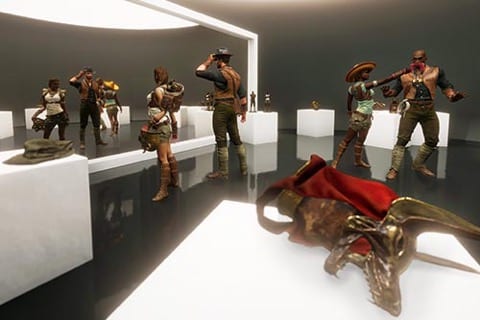While virtual reality has been around for decades, it has only recently hit its stride in the entertainment realm. A closer look into the rise of the technology and the current and potential applications reveals that VR is here to stay.
First, a quick, non-technical discussion of how VR works. Kevin Anderson, executive producer with Steelehouse Productions in Tulsa, explains that creation of VR content involves either a stereoscopic 360 degree camera – which provides depth information from two images like our two eyes do – or game engine technology that is producing two high-resolution images that are rendered in real time (at an exceptionally high frame rate per second).
The good news? You don’t really have to understand how it works to get the full experience.
“Our poor little primitive brains cannot distinguish between virtual reality and reality,” says Anderson. “The minute that our eyes and our ears are fully immersed, we start to treat and encode those experiences as if they are real.”
VR has become a popular entertainment avenue in recent years. Red Door Escape Room, with locations in Oklahoma City and across Texas and California, has begun to offer VR as part of their immersive experiences.
Sherrie Frick, Red Door’s OKC sales manager, says that VR can appeal to adventure-lovers of all ages.
“People from ten to 100 … whoever wants to come in and play this, they love it,” she says. The games require at least two players, but can involve many more. Participants are virtually transported into games through use of a headset and hand controllers and are aware of each other within the game.
“We’re all about increasing the communication and teaching people that there are fun activities that are also forms of entertainment that can bring you closer together,” says Frick.

OKC’s Red Door Escape Room utilizes virtual reality technology in its scenarios. 

Virtual reality technology has recently become incredibly popular in the entertainment sector, but its applications reach far beyond gaming.
And while entertainment is a popular use for VR, it’s applications don’t end there. Red Door offers team building exercises for multiple organizations, and Kevin Anderson mentions the growth of VR within enterprise training.
“It’s an ideal training medium for anything that’s risky or impractical to practice or to train on,” says Anderson. “It solves a very specific challenge for [the companies] – how do you take someone from the classroom to hands-on when you’re talking about very expensive equipment or very dangerous situations?”
As the equipment and technology improves, opportunities expand. Anderson notes that there are myriad ways to utilize VR with the elderly and for those with neurological or physical disabilities, both to provide them with virtual experiences and to help others understand their world. VR can even be used to open the horizons of young people through unique experiences that wouldn’t otherwise be available to them.
For those who haven’t dipped their toes in the world of VR for a few years, Anderson urges you to give it another try. A lot has changed in recent months, and the technology very likely has a secure place in the future.
“There’s a much bigger story and there’s going to be a much deeper impact on society as a whole than just gaming,” he says. “VR is going to be much bigger than that.”





























